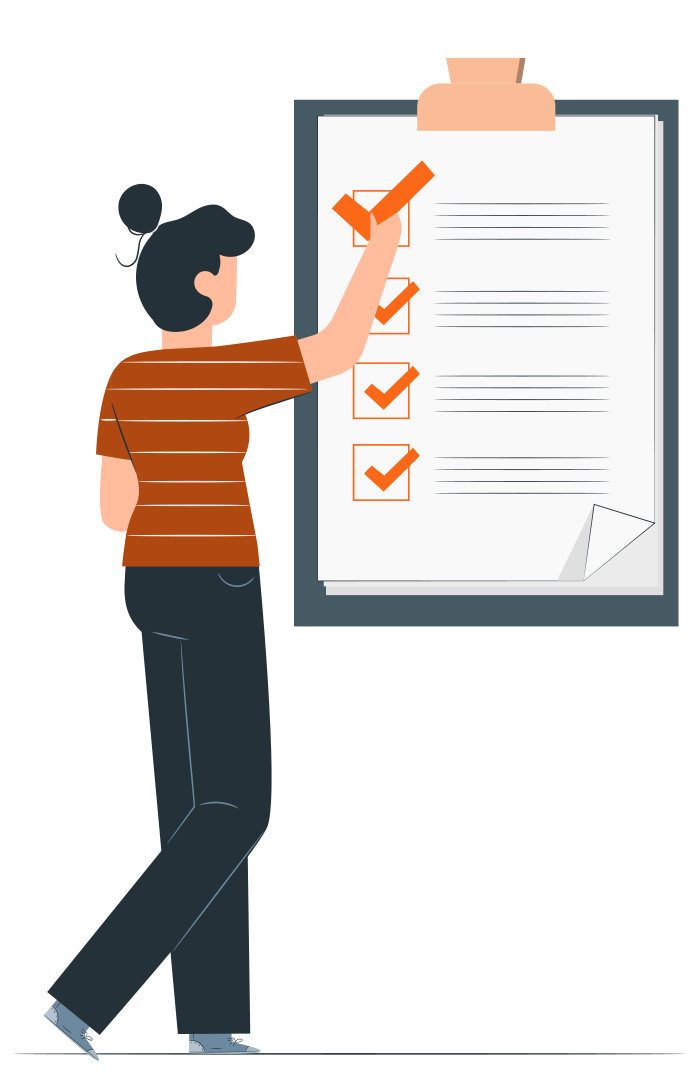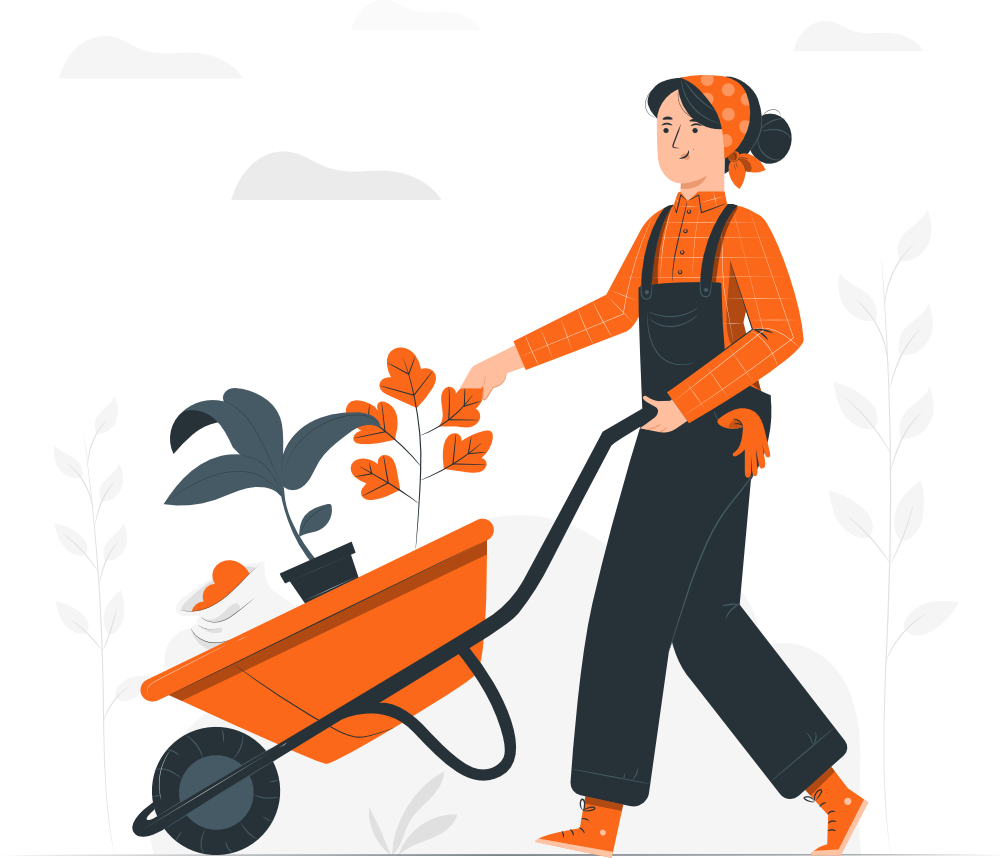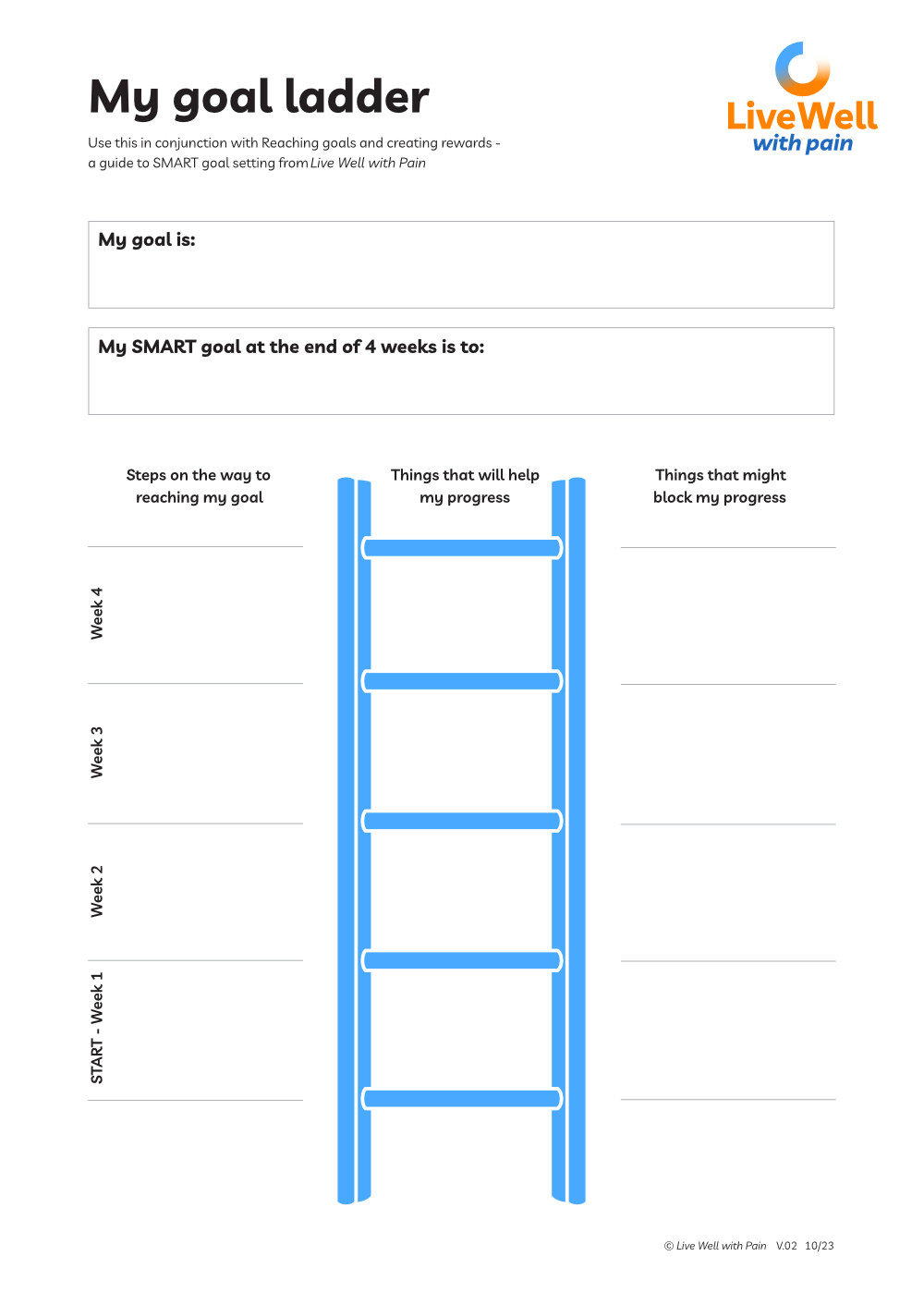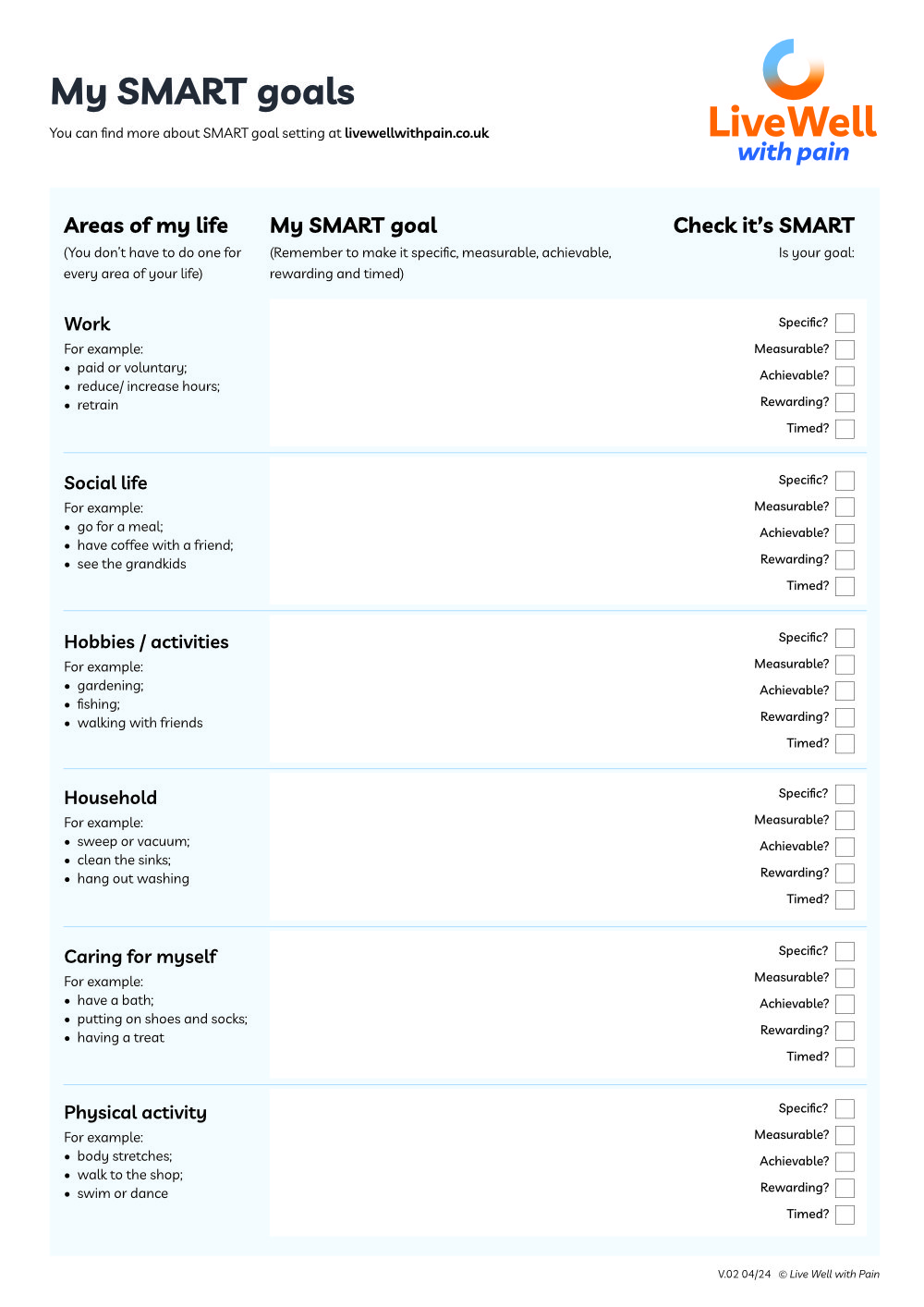Setting goals and getting active
Goals are a helpful way of noticing and recording the progress you make over time. Sometimes though, for people with persistent pain, reaching your goals may be so challenging that it doesn’t even seem worth trying.
Achieving your goals may take longer and require more planning. However, this doesn’t mean it’s impossible. This is where goal setting comes in . . .

Why goal setting is so important for managing pain
People with pain have found that they are more likely to reach their goals once they have developed the skill of goal setting.
You can set goals for any area of your life. For example, you might want to be more physically active, so you could set yourself a goal to swim two lengths of the local pool twice a week, to be achieved over a three month period.
You may want to be less reliant on medicines to manage your pain, so you could set a goal with your GP or pain specialist to reduce them over a period of time.
Or you may want to socialise more, in which case you might set a goal of having a family meal out, going and listening to a band, or a half-day shopping trip to the shopping centre with friends, once a month.
Be SMART with your goal setting
Think of your goals as if they are an end destination. If the destination is close, then goals will be short term. Alternatively, if your sights are set far in the distance, then it may be long-term goals that you need.
When you set goals, you need to think about how you will achieve them. What kind of journey are you going to take?
Rather like a train taking you on a journey, you may have to change routes, deal with delays, faults on the line or timetable changes; but in the end, you will get there.
When it comes to goal setting, one of the surest ways of getting there is by learning how to create SMART goals.
Learn all about SMART goals
Goal setting – some top tips
Avoid an unpleasant chore or a really tricky goal like losing weight, as these can demotivate you.
To get started with SMART goal setting, experiment by trying a fairly easy goal.
Don’t overdo it. People with pain often aim too high, or try to do things too early or quickly, which often leads to setbacks and a sense of failure.
Your goal should be a bit of a challenge but not too difficult so that your pain becomes more difficult to manage.
Don’t be afraid to review and revise your goals as you go along.
It isn’t a test. So if it seems a struggle, try a more fun or rewarding goal.
Try sharing your goals with other people – it will help them to understand what matters to you and how they can help you make progress.

True story
“I just wanted to stop walking with crutches”
Jimmy hated his crutches – and hated himself because he felt weak . . .
Read more
Getting active – a common goal that will help you manage your pain better
Some people with pain had a very active life before the pain. For them, getting active again is a common goal.
Others find it helps to be more active and build fitness – even if it wasn’t really part of their life before pain arrived.
This is because enjoyable, rewarding and regular activity builds confidence to do things and lessens the struggles with pain.
So let’s take a look at what you can do to get fitter and stay active.

How can I get fitter and more active?
Like many people with persistent pain, you may be avoiding physical activity because you are worried it will make your pain worse.
These fears are normal and understandable – when you live with pain, the last thing that you want to do is aggravate it further! So it may be encouraging for you to know that getting fit and staying active is actually good for your sleep and your pain.
The key to getting fitter is to keep it going every day. To help maintain regular activity levels, there are a number of things that you can do:
Do physical activities that you enjoy
Quite simply, if you enjoy what you’re doing then you’ll be more motivated to keep it up. This could be anything from taking a morning walk through to swimming, playing badminton or gentle Tai Chi or Yoga guided by an app.
Learn the skill of pacing
Pacing is a really useful skill as it guides you to do the level of activity that is right for your body. When you pace your activity, you take a break before pain, tiredness or exhaustion forces you to stop. You can learn more about the skill of pacing in Footstep 3.
Try doing activities outside during the day
Being outside in the daylight helps your body clock to stay in balance with day and night time patterns. It can help with stressful feelings too.
Avoid energetic activities shortly before sleep
Exercising late in the day ‘wakes up’ your body and so it can lead to problems falling asleep or staying asleep. To help with sleep, the best time to exercise is late in the afternoon or early evening. Find out more about sleep in Footstep 6.
Or discover five changes you can make for better sleep here.
True story
Stretching and exercise – my daily doses of medicine
Pete stopped exercising because when he moved, it hurt. Now he’s fitter and no longer needing to take pain medication.
Find out how
Four ideas for getting (and staying) active
OK, so you’ve decided you’re going to become more active. The tricky bit is deciding what to do, how to do it, and how much time and effort to put in. Here are four ideas that can help.
Four great ideas
Rewards – a useful tool in your goal setting toolkit
Here’s one final tip to help you reach your goals – use rewards.
Rewards are tiny treats or pleasures that can provide a boost when you are working towards goals. They could be things like a trip to the movies, spending some time in the garden, or simply having afternoon tea with a friend.
Rewards, when used in conjunction with goals, give a sense of pleasure, satisfaction or achievement and help build confidence. They give us the drive to keep going, even when it seems difficult. They encourage us to think ‘it’s worth a try’.
Rewards also help us to repeat activities. We tend to do more of something if we feel rewarded for it, either by ourselves or by others.

Useful resources
My Goal Ladder
Many people living with pain find it useful to break down their goals into small, achievable steps.
You can think of them like steps on a ladder – with each rung of the ladder being step on the way to achieving your goal. (Practical tip: think of each step as taking about a week to achieve).
Download and print this A4 sheet so you can fill in the steps. It may help you to build up, week by week, towards your bigger goal.

Goal setting
Achieving goals, especially for people living with persistent pain, can be difficult. You may even find it so challenging that it doesn’t seem worth trying.
One way of increasing your ability to reach your goals is to develop the skill of goal setting.
This leaflet explains how.

My SMART Goals
When it comes to thinking about your own goals and how to make them SMART, try using this handy sheet.
Writing down your goals in My SMART goals will help you to start thinking about goals in different areas of your life.
You can download this PDF resource and print it out:

Goal setting
Key ideas
✔ Having goals helps you to focus on the things that matter most to you
✔ Developing goal setting skills will increase your ability to achieve your goals
✔ Using SMART goals will give you a better idea of how to go about achieving them. And you’ll be far more likely to get there!
✔ Writing down your weekly steps towards achieving your SMART goals will help keep you on track
✔ Don’t forget to build in some rewards!